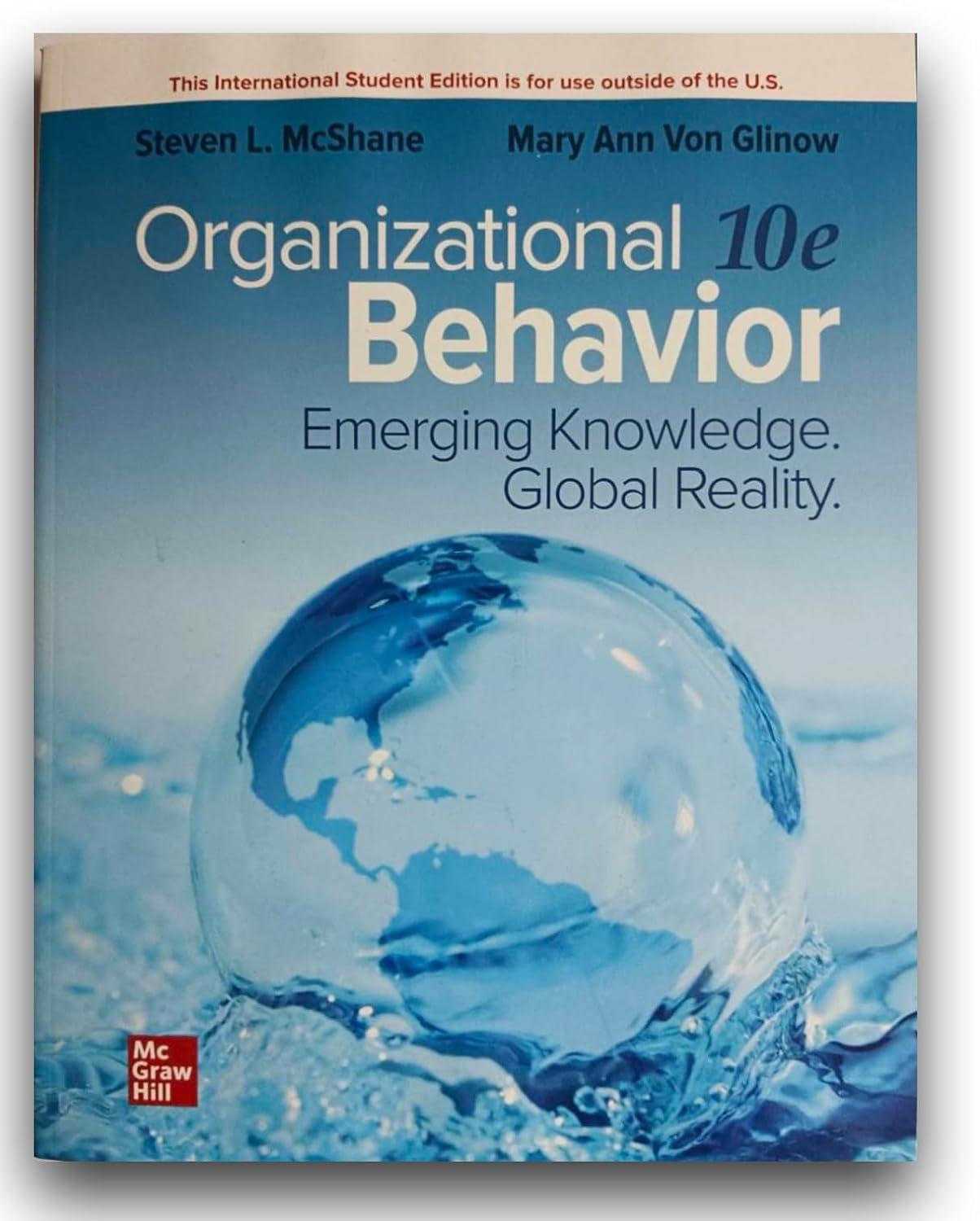CommsOne Bank is one of Asias largest financial institutions and is recognized as a leader in business
Question:
CommsOne Bank is one of Asia’s largest financial institutions and is recognized as a leader in business banking.
However, it has had difficulty gaining market share in the personal banking business (accounts, credit cards, investment funds) where several other companies dominate the market. To improve its position in the personal banking market, CommsOne decided to acquire TaurusBank, a much smaller financial institution that had aggressively developed investment funds, online banking, and digital transaction initiatives in the region.
Taurus was owned by a European conglomerate that wanted to exit the financial sector, so the company was quietly put up for sale. The opportunity to acquire Taurus seemed like a perfect fit to CommsOne executives, who saw the purchase as an opportunity to finally gain a competitive position in the personal investment market. In particular, the acquisition would give CommsOne valuable talent in digital banking and investment fund businesses.
Negotiations between CommsOne and TaurusBank occurred secretly, aside from communication with government regulatory agencies. The acquisition took several months because CommsOne’s executive team spent considerable time pouring over Taurus’s financial status to ensure the purchase was truly accretive. When CommsOne finally decided in favor of the acquisition, employees of both companies were notified only a few minutes before the merger was announced publicly. During the public statement, CommsOne’s CEO boldly proclaimed that TaurusBank would become a “seamless extension of CommsOne.” He explained that, like CommsOne, Taurus employees would learn the value of detailed analysis and cautious decision making. The comments by CommsOne’s CEO shocked many employees at Taurus, which was an aggressive and entrepreneurial competitor in online banking, digital transactions, and personal investments. Taurus was well known for its edgy marketing, innovative products, and tendency to involve employees to generate creative ideas. The company didn’t hesitate to hire people from other industries who would bring different ideas to the investment and digital banking business. CommsOne, on the other hand, almost completely promoted its executives from within the ranks.
Every one of the senior executive team had started at CommsOne. The company also emphasized decision making at the top to maintain better control and consistency.
Frustration was apparent within a few months after the merger. Several Taurus executives quit after repeated failure of CommsOne’s executive team to decide quickly on critical digital banking plans. For example, at the time of the acquisition, Taurus was in the process of forming affinity alliances with several companies regarding digital banking initiatives. Yet, six months later, CommsOne’s executive team still had not decided whether to proceed with these partnerships.
The biggest concerns occurred in the investment fund business where 20 of TaurusBank’s 60 fund managers were lured away by competitors within the first year. Some left for better opportunities. Six fund managers left with the Taurus executive in charge of the investment fund business, who joined a company that specializes in investment funds.
Several employees left Taurus after CommsOne executives insisted that all new investment funds must be approved by CommsOne’s executive group. Previously, Taurus had given the investment fund division enough freedom to launch new products without approval of the entire executive team.
Two years later, CommsOne’s CEO admitted that the acquisition of TaurusBank did not gain the opportunities that they had originally hoped. CommsOne had only slightly more business in investment funds and digital banking than the two companies had before the merger. A greater worry was that many talented people in those two areas had left the firm, which was stifling future growth.
Overall, the merged company had not kept pace with other innovative financial institutions in the market.
Discussion Questions 1 Based on your understanding of mergers and organizational culture, discuss the problems that occurred in this case.
2 What strategies would you recommend to CommsOne’s executives to avoid these corporate culture clashes in future mergers and acquisitions?
Step by Step Answer:

ISE Organizational Behavior Emerging Knowledge Global Reality
ISBN: 9781266108099
10th Edition
Authors: Mary Ann Von Glinow Steven McShane





